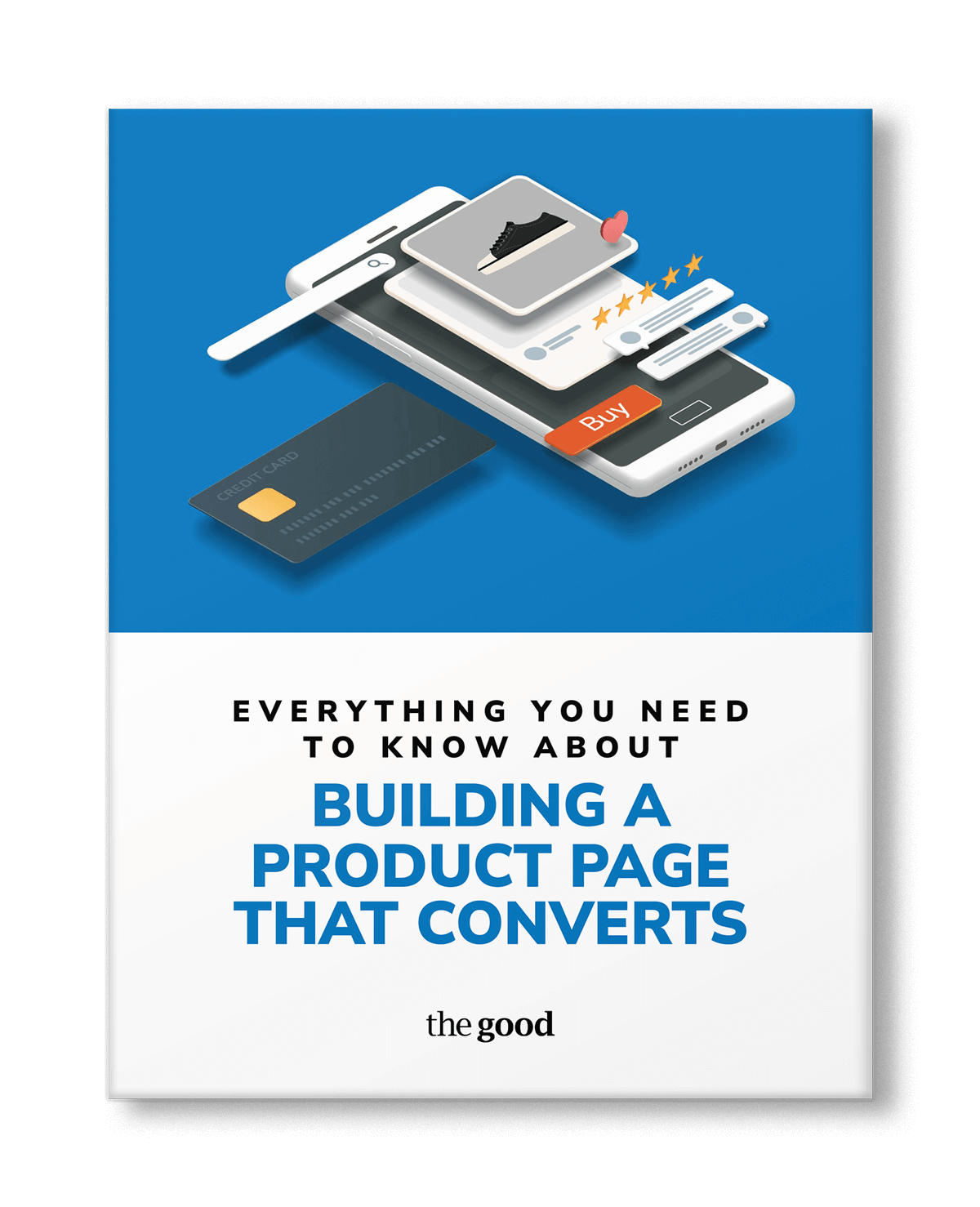
How To Optimize Your Website For Both DTC and Wholesale
The gold standard of optimization is building an online experience that caters to your users. But what happens when you are selling to both B2B and B2C shoppers?
There is nothing more frustrating to a customer than arriving at a website with the expectation that they’ll find the perfect product or solution to their challenge, only to be met with a site that speaks to someone else entirely.
And there is nothing more frustrating to a business than losing out on a sale because their website was optimized for one audience and, in turn, alienated a whole second subset of shoppers.
We see this a lot for ecommerce brands that have a direct-to-consumer and wholesale operation. They are selling to shoppers purchasing for personal use AND to big businesses who are then going to resell their product.
It’s a great opportunity for the brand, expanding its reach and diversifying channels. However, the two audiences are on completely different customer journeys, making it difficult to create a digital experience that delivers to both.
We’ve gone deep into how to manage (and prevent) channel conflict. But, we still feel there is something left unsaid: How can brands specifically optimize their online experience for both a B2B and B2C audience?
In this article, we’ll look at a step-by-step approach for catering to your unique users.
Let’s dive in.
Understand Your Audience
As a business straddling the line between B2B and B2C sales, it can seem impossible to deliver a seamless website experience for both. But that isn’t the case if you take the time before diving into the intricacies of dual-targeting strategies to understand your data.
Note: If you’re a reader of our content, the first step being an analysis of your audience and data shouldn’t come as a surprise. It’s a foundation for all of the optimization strategies we’ll recommend later on.
A good first step is to check your Google Analytics. Specifically:
- Review Audience by Page: Take a look at the distribution of your audience across different sections of your website. Analyze page-specific data to identify where both B2B and B2C users are engaging or where one audience may play a bigger role.
- Review Traffic Source by Page: Traffic sources play a pivotal role in shaping user intent. Review how users arrive at specific pages so you can better align the content on your site with their expectations.
- Review Revenue Source by Audience: Identify where the majority of your revenue is coming from so that you can make informed decisions on prioritization and resource allocation for each audience.
Reviewing your ecommerce analytics reports will help you determine the traffic and revenue split between B2B and B2C.
Map The Customer Journey For Each Segment
Once you have an idea of your audiences and how they engage with different parts of your site, you can outline the customer journey of each. This helps you make informed decisions on when to prioritize one audience over the other and put together a unique treatment for each.
A few good questions to answer in this stage are:
Do you have a primary audience?
Establish if one audience generates significantly more revenue than the other. Or if there is one that is always shopping online while the other generally prefers print or in-store. This is a great prioritization tactic.
Where do you need to have messaging and content that speaks to both audiences? Where can you prioritize one audience over the other?
This helps to identify key touchpoints where messaging and content need to resonate with both B2B and B2C audiences. It also gives context so you can strategically prioritize one over the other (where it makes sense) based on the significance of each segment.
Where in the customer journey do you divert B2B traffic to a different section of the site?
Also, as you look at the customer journey, you can pinpoint where diverting B2B traffic makes the most sense. Usually, you can uncover specific touchpoints to redirect the different shoppers for more tailored experiences. This ensures that users encounter content and features relevant to their needs, optimizing their journey and increasing their likelihood to purchase.
Hypothesize Areas for Improvement
With all of your context, you’re set up to start hypothesizing areas for improvement on your website.
We’ve optimized hundreds of millions in revenue for clients and their digital properties, so while strategies will depend on what you uncover, there are some common areas for optimizing the B2B and B2C challenge and a few examples that can help get you started.
Homepage
The homepage serves as a crucial touchpoint for both audiences. Find ways to guide users to their intended website pages with consistent design but unique stories and content that resonate with both.
Here is a great example from Old World Christmas, whose digital team works with The Good to optimize their direct-to-consumer (DTC) site while keeping their robust retailer network in mind.
By reimagining a homepage module that directs users to register as a retailer, they showcase similar messaging and content that both B2B and B2C customers can appreciate, while still providing a clear call-to-action for potential partners.

This creative approach ensures a consumer-friendly presentation while still addressing the vital B2B audience.
Everything You Need To Know About Building A Product Page That Converts

Menu Navigation
Consider menu navigation sections that cater specifically to B2B and B2C users.
Ecommerce companies can learn from SaaS in this regard. Distinct functionalities may be more appealing for each audience type, so SaaS companies reflect this right away in the menu.
QualtricsXM, for example, shares specific use cases for their product right in the menu and also highlights who that use case is best for.

While ecommerce brands will likely choose to take a softer approach, there is value in seeing how a menu can be laid out so users know exactly where to click next to get to the right content for them.

The office supply company, Staples, has a dedicated “For Business” section prominently displayed in their navigation. Clicking on the option expands it and shows users the option to explore wholesale or B2B programs that Staples offers.
Landing Pages
Segmentation is a powerful tool to tailor your website experience for different audiences. Consider creating distinct landing pages based on user profiles.
This allows you to prioritize the segment that contributes the most to your revenue without neglecting the other. On landing pages, you can craft messages that resonate with the distinct needs of B2B and B2C audiences.
Let’s take a look at how tailored messaging can enhance the user experience and align with the goals of each segment.
Take Brooklinen, a brand that caters to DTC and wholesale customers through distinct landing pages, as an example.

For their DTC audience, Brooklinen prioritizes ease of purchase.
Their landing page is representative of a well-designed ecommerce site. A ‘Shop by Category’ option can be found directly under the fold.
They also highlight enticing “Best Sellers” in the next section. Browsing feels effortless, guiding customers toward adding to their carts.

On the B2B side of things, the spotlight shifts from shopping to partnering with Brooklinen.
They do away with product listings on this landing page, focusing instead on their two programs: Trade and Hospitality. Each program is tailored to specific business needs.
CTA buttons are different, with “Apply Now” and “Log In” being the call-to-action on the B2B landing page.
Test and Validate (Or Invalidate) Ideas
Once you’ve hypothesized areas for improvement, you’ll be excited to start improving your website. But, before implementing changes, make sure you test changes with your audiences.
The goal is to collect feedback to validate or invalidate hypotheses and refine your strategies based on real user insights. This is a crucial step in the process that can help your site be more user-centered, save you resources, AND increase conversions.
Depending on your time and the change you’re testing, we would normally recommend A/B testing or a form of rapid testing.
Once you confirm that your ideas will positively impact the user experience you can go ahead and implement them, feeling confident in your decision and how it will improve your online experience.
Improve B2B Sales Without Hindering Online Purchases
The key to improving your B2B sales without hindering online purchases is to make sure each user’s journey is optimized for their unique requirements.
Continuously adapt and refine your strategies, and your business will thrive by catering to the needs of both B2B and B2C audiences.
A few tips to remember before I sign off:
- Prioritize based on revenue but consider the unique needs of each audience.
- Strategically divert B2B traffic at critical touchpoints in the customer journey.
- Tailored messaging and design enhancements can significantly impact user engagement.
- Regular testing and evaluation are essential for refining strategies and ensuring ongoing success.
With that in mind, you can embrace the duality of B2B and B2C sales, viewing it not as a challenge but as an opportunity for growth.
And if you want to start optimizing for both B2B and B2C, contact us.
Enjoying this article?
Subscribe to our newsletter, Good Question, to get insights like this sent straight to your inbox every week.

About the Author
Katie Encabo
Katie Encabo is the Customer Success Manager at The Good. She focuses on supporting and improving the experience of top-performing ecommerce and SaaS growth teams as they optimize the digital experience for their users.